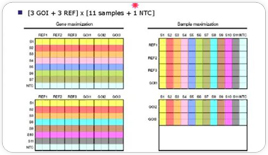
Using Multiple Reference Genes and Other Factors to Obtain High-Quality Gene Expression Data
August 27, 2007
Dr. Jo Vandesompele
All users:
Play video
![]()
Abstract:
Real-time PCR is the current standard for accurate, sensitive, and fast gene expression measurement. The reliability of the final quantitative results is heavily dependent on the quality of all elements in the laboratory and data analysis workflow, including the input template (integrity and absence of inhibitors), the PCR assay (specificity, efficiency, limit of detection), experimental design, normalization strategy (use of multiple validated reference genes) and data processing steps. In this webinar, Dr. Vandesompele illustrates these important issues, with a specific focus on the identification, use, and utility of multiple reference genes to obtain high-quality gene expression results.
About the speakers:
Dr. Jo Vandesompele earned his Master's degree in bioengineering (MS BioE) in 1997 from Ghent University, followed by a PhD in medical genetics in 2002. Currently, he is a postdoctoral fellow at the Center for Medical Genetics in Ghent, Belgium. He has coauthored over 60 papers in international peer-reviewed journals. The main themes of his research program are the establishment of genetic and biological bases of childhood tumor neuroblastoma, methodological and technical developments in the field of real-time quantitative PCR, and development of bioinformatic tools such as geNorm, qBase, RTPrimerDB, arrayCGHbase, methBLAST, methPrimerDB, PGE, and Neuroblastoma Gene Server.
